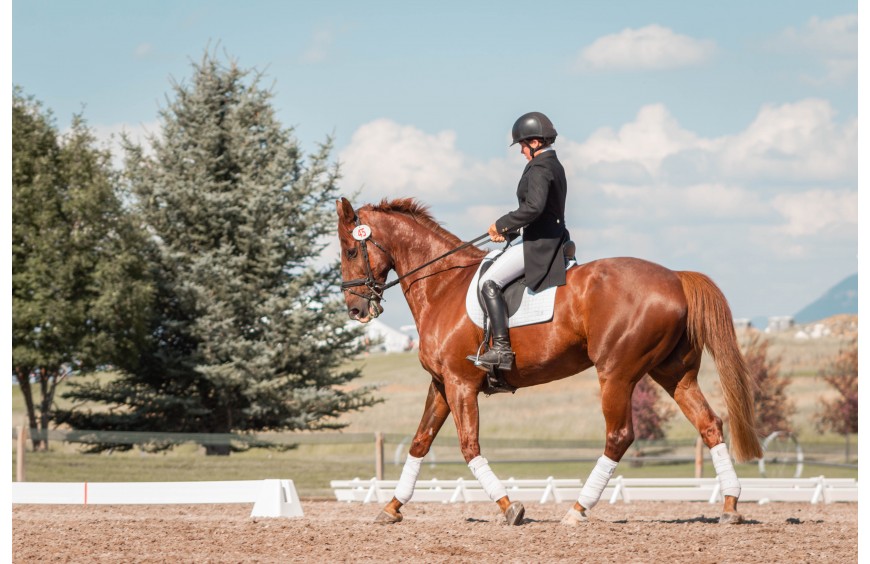Best body camera for horse riding
As horse riders, it’s important to take safety precautions seriously. While protective equipment, training and experience are musts for a safe ride, investing in the best body camera while on horseback can give you an extra layer of protection.
With a body camera attached to your chest or helmet while riding, you’ll be able to monitor the environment around you more easily by capturing footage so that both yourself and your beloved equine companion stay out of harm's way in any situation.
Being aware of nearby traffic also helps keep everyone safe! In this blog post we'll explore what makes up an ideal body camera for horse riding as well as discussing why having one is especially essential when taking part in this wonderful sport or leisure activity.
Introducing Body Cameras for Horse Riding - what are the benefits of having a body camera when riding horses
It is no secret that horse riding comes with a multitude of risks. Perhaps the most obvious are collisions and falls, which can be extremely dangerous for both riders and horses at any speed. Having a body camera will help you document the events leading up to a crash or fall so that you can review them afterwards in more detail and learn from any mistakes made.
Body cameras can also help you monitor the environment around you when riding, giving you the ability to capture footage of drivers passing too close or recklessly.
This could be especially useful in case of an accident or injury, as this recorded footage would provide evidence of who was at fault and thus aid your claim for compensation.
Types of Body Cameras for Horse Riding - what to look for when choosing a body camera
When shopping around for your body camera, there are a few key factors to consider. For starters, the size of the camera is important as it needs to fit comfortably on your helmet or other garment while riding.
It should also be lightweight so that it won't interfere with your ride. In terms of quality, you should look for a camera with high resolution recording as well as clear audio. Video stabilization is another great feature to have if possible, as it will reduce any shakiness caused by the horse's movements while in motion.
Battery life is also an important factor to consider - you want your body camera to last through a long ride without needing to be recharged!
How to properly mount and secure your body camera to ensure stability while riding
Now that you've found the perfect body camera for horse riding, it's time to install it. First and foremost, always ensure that your helmet or other garment is securely fastened before mounting the camera.
The next step is to position the camera so that it won't obstruct your vision or be too tight against your skin. Once mounted, make sure the camera is securely fastened to your helmet or garment and won't move when you shift around in the saddle.
How to select the best quality and storage capacity option
The most important aspect of your body camera's video quality is the recording resolution. Most cameras will offer a range of resolutions from low to high, with higher resolutions offering better clarity and detail.
Storage capacity is also an important factor - look for a model that offers enough internal storage or memory card slots so that you can easily store and access your footage.
What type of accessories should you consider in order to get the most out of your body camera
There are a few essential accessories that you should always have on hand when using your body camera. The most important of these is an extra battery to ensure uninterrupted recording during long rides. Other items to consider include a protective case, memory cards and straps for attaching the camera to different parts of your apparel.
Tips on setting up and recording videos with your equine body camera
Once you've installed your body camera and all the necessary accessories, it's time to start recording! Before pressing the record button, make sure that the viewfinder is properly adjusted and that you are in a safe spot.
When riding, always remember to keep your movements slow and steady - this will help ensure that your footage is clear and stable. Additionally, pay attention to the environment around you and be aware of any potential obstacles that could come into view while recording.
These are just a few tips on how horse riders can benefit from wearing body cameras while riding. With the right equipment, safety precautions, and knowledge of how to use your body camera, you'll be able to have a safe and enjoyable riding experience - with the added bonus of capturing memories along the way!
Conclusion
Wearing a body camera while horse riding is becoming more popular amongst riders for its safety, convenience, and entertainment benefits. Not only does it provide extra protection from any potential accidents, but also allows riders to capture and review footage from their rides.
With the proper camera selection, mounting technique, and video recording tips, everyone can get the most out of their body cameras and make sure that they are always prepared for whatever comes their way on the next ride.
So don't wait - invest in an equine body camera today and have the peace of mind that you'll be safe no matter where your ride takes you. Happy riding!

